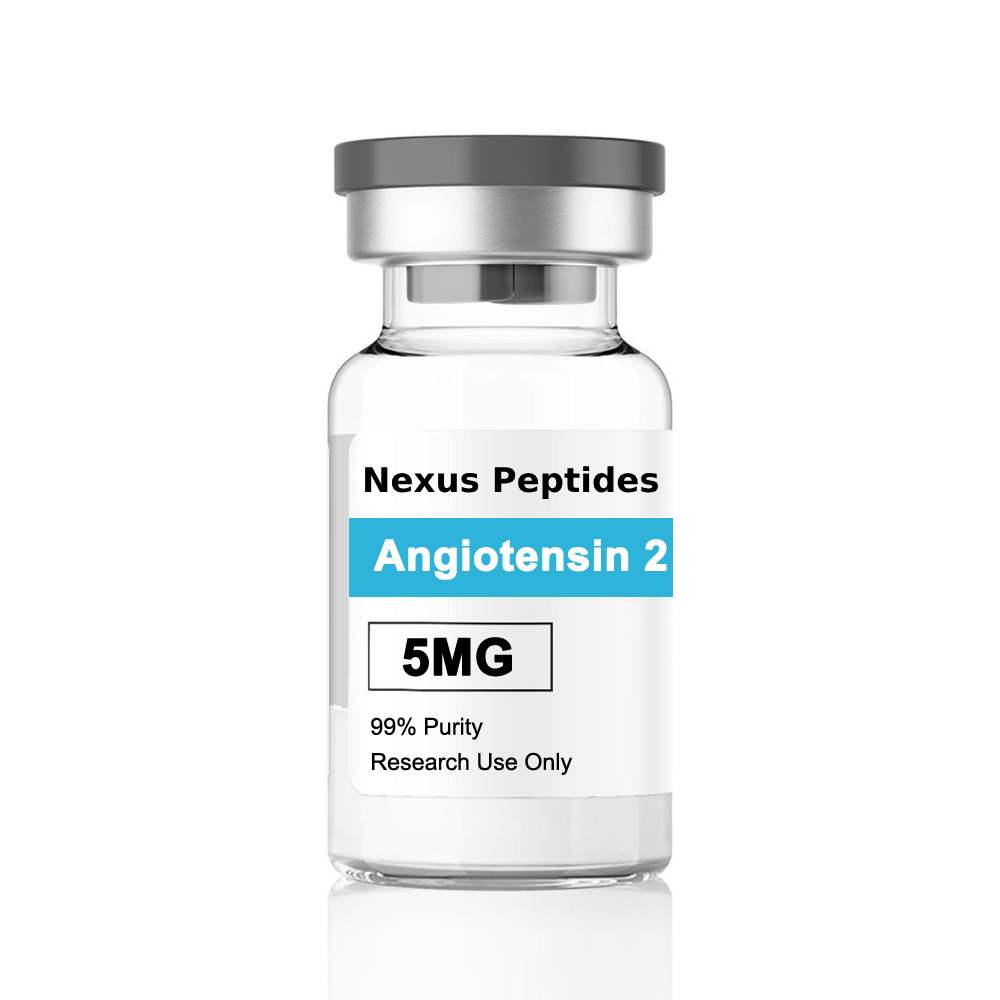Nexus Peptides
Angiotesin 2: 5-10mg*10 vials
Angiotesin 2: 5-10mg*10 vials
Couldn't load pickup availability
Share


Angiotensin
Introduction:
Angiotensin is a peptide molecule widely studied in biochemistry and molecular biology. This research-grade peptide, with a purity of 98% or higher, is an essential tool for scientists investigating peptide-receptor interactions, signaling pathways, and physiological regulation in controlled experimental settings.
What is Angiotensin?
Angiotensin is a naturally occurring peptide hormone in the renin-angiotensin system (RAS), a complex signaling system. It is synthesized in vivo through enzymatic cleavage of its precursor, angiotensinogen. Angiotensin has multiple forms, such as Angiotensin I, II, and III, each playing a unique role in RAS-related studies. In research, synthetic angiotensin variants are employed to explore receptor binding and molecular mechanisms of action.
Potential Different Names:
- Angiotensin
- Angiotensin I
- Angiotensin II
- Angiotensin III
- RAS Peptide
Chemical Formula:
The chemical formula of angiotensin varies depending on its specific form. For Angiotensin II, the formula is:
C50H71N13O12
Structure:
Angiotensin is a linear peptide comprising a sequence of amino acids. Angiotensin II, the most commonly studied form, contains eight amino acids with a precise arrangement that facilitates receptor binding. This structure is critical for its role in peptide-receptor interactions and enzymatic cleavage. The peptide sequence, along with post-translational modifications, contributes to its biological activity and receptor specificity.
How Does It Work?
Angiotensin acts by binding to specific receptors, such as the angiotensin type 1 (AT1) and type 2 (AT2) receptors. These interactions trigger intracellular signaling cascades, which researchers can analyze to better understand molecular pathways. Angiotensin is also a substrate for enzymes like angiotensin-converting enzyme (ACE), which converts angiotensin I to angiotensin II. This enzymatic conversion is an essential step for understanding the regulatory mechanisms within the renin-angiotensin system.
Conclusion:
Angiotensin is a versatile peptide molecule widely used in experimental research. Its ability to bind specific receptors and serve as a substrate for enzymatic reactions makes it a valuable tool for studying molecular mechanisms and signaling pathways. With its high purity and precise structure, angiotensin offers reliability and accuracy in laboratory investigations.
Disclaimer:
This product is intended for research purposes only and is not approved for human use, consumption, or clinical applications. Researchers should handle angiotensin with care, following all applicable safety guidelines and regulatory standards.


